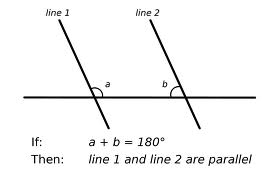Parallel Parenting and High Conflict Parents - New Indiana Parenting Time Guidelines 2013

One of the most significant changes to the Indiana Parenting Time Guidelines for 2013 is the addition of parallel parenting. What is parallel parenting?
“In parallel parenting, each parent agrees to parent their child effectively, parenting “next to” one another rather than “with” each other. Minor issues concerning the children are not communicated about. However, each parent does provide the other parent with “important information” about the children, without debating about the parenting plan or either one’s style of parenting.”[1]
What do the new Indiana parenting time guidelines say about parallel parenting?
The Indiana Parenting Time Guidelines, effective March 1, 2013, state that parallel parenting is a deviation from the parenting time guidelines, should be limited to cases where the court determines the parties are high conflict and a parallel parenting plan court order is necessary to stop ongoing high conflict that is endangering the well-being of the child.
“High conflict parents” is defined by the guidelines as “parties who demonstrate a pattern of ongoing litigation, chronic anger and distrust, inability to communicate about and cooperate in the care of the child, or other behaviors placing the child’s well-being at risk.”
A parallel parenting order is a deviation from the guidelines and the court may deviate from the guidelines to reduce the adverse effects on the children.
In application each parent will make day-to-day decisions about the child while the child is with the parent. The guidelines state that “[w]ith parallel parenting, communication between the parents is limited, except in emergencies, and the communication is usually in writing. Appropriate counseling professionals are recommended to help parents handle parallel parenting arrangements. Parallel parenting may also be appropriate to phase out supervised parenting time.”
Parallel parenting is not meant to be a permanent arrangement, and in all cases the court will set a mandatory review hearing of the parallel order at least every 180 days.
For more regarding the reasoning behind parallel parenting, and the aspirations of a parallel order, I have copied portions of a discussion by Dr. Allison Bell, PsyD., below. Her full discussion of parallel parenting can be found here.
To discuss this please contact me. To see all of my postings on this topic search here.
The Definition and Merits of Parallel Parenting
Allison J. Bell, Psy.D.
Since the late 1990’s, there has been a fair body of research literature published regarding families of divorce and the styles of parenting after divorce. In a 2005 article for the Journal of the American Academy of Matrimonial Lawyers, Dr. Joan B. Kelly, widely known and respected for her research on children of divorce, writes about beneficial parenting plan models for children post-divorce. The impact of conflict is now well-known to be the key predictor of children’s adjustment post-divorce, and this knowledge has informed a greater acceptance of multiple access options for parents and professionals, as well as the courts, to consider.
The majority of parents are able to lessen their conflict within the first two to three years following a divorce, but as many as 20% of such parents remain entrenched in conflict. Parenting styles generally fall into three categories: cooperative, conflicted, or disengaged. Parents who argue a lot and who cannot gain control of their hostility need to learn to disengage. They can still parent together, in a form known as Parallel Parenting.
In parallel parenting, each parent agrees to parent their child effectively, parenting “next to” one another rather than “with” each other. Minor issues concerning the children are not communicated about. However, each parent does provide the other parent with “important information” about the children, without debating about the parenting plan or either one’s style of parenting.
Important information means anything that refers to the health, welfare and interests of the children. Thus, if a child is sick, the other parent must be notified of this fact, including details on what medications have already been administered and what treatment needs to be continued. If a child has a school field trip, the other parent must be notified. A decision about which parent might chaperone the trip shall be made in accordance with the parenting plan outlined in the Agreement/Stipulation/Judgment of Divorce. The same is true of Little League or other extracurricular activities that the children participate in.
Each parent develops and maintains their own relationships with the child’s teachers, coaches, doctors, dentists and friends. The child has one set of these professionals in his/her life, not multiples. The child goes to one school or daycare center and has one set of teachers there. The child has one pediatrician, one dentist, etc. The parents maintain independent communication with each of these professionals, unless required to be at a particular forum jointly.
Since communication remains vital and necessary, it is often advised that non-emergency communications be done by email or fax (Philip M. Stahl, PhD. 2000). It is all right to limit non-emergency communications to once a week, barring time-sensitive information. Immediate concerns need to be shared by telephone and any additional method as soon as possible. Reducing general communication helps reduce conflict.
For parents with very young children, it is vitally important to share information frequently, perhaps on an almost daily basis. This does not have to be done in a conversation; a useful tool for sharing detailed communication is a “parent communication notebook”, in which all the highlights of a child’s emotions and behaviors can be written down for the other parent to read upon each exchange of the child. Things that are typically included in this notebook are observations about the child’s health, feeding and sleeping patterns, language issues, the child’s moods, what techniques might soothe the child best, and what circumstances seem to upset the child. It is important that this notebook stays with the child so that both parents have access to it and can use it as a forum for sharing thoughts and observations about the child’s needs.